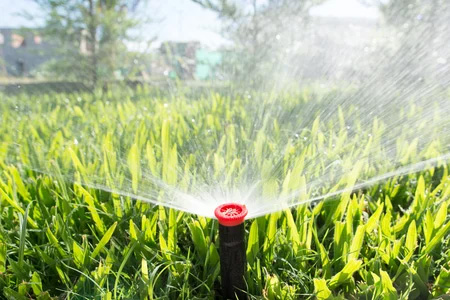Tips to get rid of crabgrass, the annoying lawn invader
A healthy lawn offers numerous benefits, such as curb appeal, recreational space, and a habitat for local wildlife. So, when you start to notice crabgrass taking over your lawn, it can be frustrating.
Crabgrass is a common weed that can take over your lawn or garden. It loves heat and water and produces a lot of seeds. Its clumps of thick stems and broad leaves can make it easy to spot in your lawn. I notice it most when we’re experiencing a warm, dry summer. The rest of my lawn is brown and dormant, and the crabgrass is still green. It makes my yard look like a splotchy mess.
If you’re striving for a nice healthy lawn, here are some things you can do:
1. Apply a pre-emergent herbicide in spring. Applying an herbicide in spring can be helpful in preventing crabgrass. Lawncare specialists recommend applying it when soil temperatures are above 50 degrees Fahrenheit for several days in a row. If you’re not sure how to obtain soil temperatures, watch for the trees to start blooming, or call your local yard and landscape professional for assistance.
2. Apply a post-emergent herbicide. If you didn’t apply a pre-emergent herbicide in spring, not all hope is lost. A post-emergent herbicide can be used to treat it. Just be sure the product label mentions crabgrass. Also, ensure it won’t kill your healthy grass. For example, Roundup works well on destroying weeds, but it’ll kill your grass. When using chemicals, always read the label for application and safety instructions.
3. Remove it as soon as possible. If you’re keeping an eye on your lawn, remove the crabgrass as soon as you see it. Small individual stems and blades can be removed by hand. For larger clumps consider using a weed removal tool.
4. Water your lawn regularly. Weeds love stressed-out lawns and flourish in them. To keep weeds at bay and to keep your lawn healthy and green, be sure your lawn gets an inch of water per week. If you’re using a sprinkler, that equals about 60 minutes. Regularly watering your lawn promotes deep root systems.
5. Keep your grass long. While you may prefer a shorter more manicured-looking lawn, it’s best to keep your lawn longer during the summer months. This technique promotes deeper root growth which can help snub out the weeds which compete for water and nutrients. A blade height of four inches is recommended.
6. Repair bare spots. Harsh winters, insects, animals, and diseases can wreak havoc on your lawn. Re-seeding bare spots can improve the appearance of your lawn and help keep weeds out.
7. Spend time working in your yard. There are several things you can do each spring and fall to maintain good lawn health. Raking thatch and core aeration provide many benefits. Core aeration is the process of removing plugs of soil, resulting in many holes in your lawn. As the soil plugs break down, beneficial enzymes go back into it. The holes in your lawn make it easier for water, light, and nutrients to get into the soil, promoting deeper root growth.
Too much thatch in your lawn prevents water and nutrients from getting into the soil. If you’ve never had your lawn thatched, it’s a good idea to consider it.
Lastly, don’t forget to rake up any leftover leaves.







Leave a Reply
Want to join the discussion?Feel free to contribute!